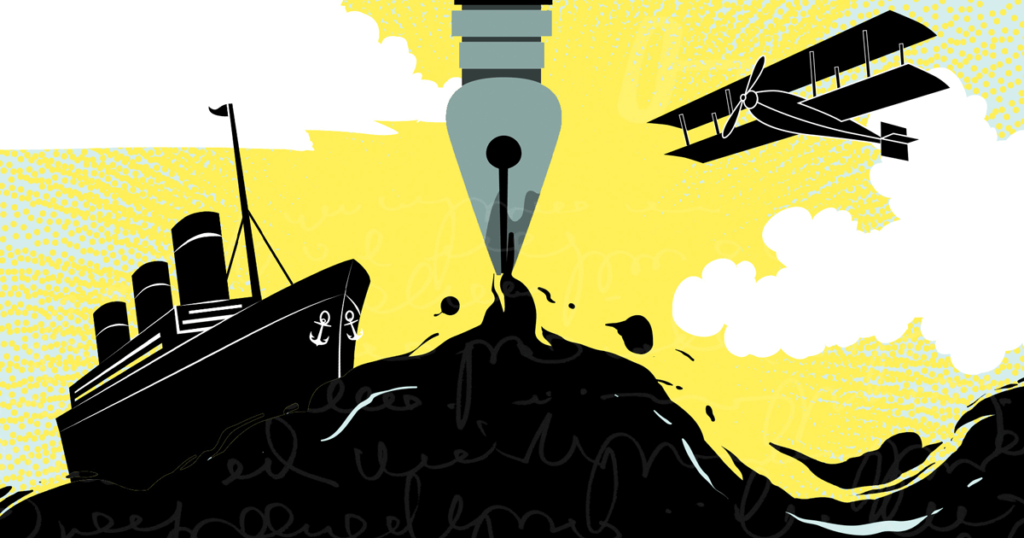Voices, Places
An excerpt from David Mason’s new collection of essays on literature and travel

David Mason finds poetry while exploring the world—from Alaska to France, Scotland to Turkey, India, Australia, and Mexico. But he also finds adventure in reading: it was “another way of being alive in the world … and it made you understand that the world was more than one thing.” In this series of essays, the former Colorado poet laureate combines the two elements, traveling the globe in search of authors and experience—Patrick Leigh Fermor and Bruce Chatwin in Greece, Ezra Pound in Venice, Thomas McGrath in North Dakota, and, in this excerpt, Ernest Hemingway in Idaho.
In Ketchum the tourist information office is also a Starbucks. We stood with our lattes and talked to a gentle fellow named Bill who liked his life in Idaho very much and told us about the summer symphony. The town sounded a bit like Aspen with less bulk and ostentation. The homes of the very rich and the clubbiness of the Sun Valley Lodge were hard to take, but otherwise it looked like a town with real life in it.
Bill had been allowed inside the house where Hemingway shot himself in 1961. The family had closed it up and left it as it was. Hermetically sealed. We drove near the river and looked in past the shut gate. A sad thing, secret beyond the trees and scrub and the straggly blossoms. A house where he would have heard the river roaring with life night and day.
Up the Sun Valley Road a bust of Ernest Hemingway stares off toward the hills. An inscription, a lively stream. And just a short way up Highway 75 there lay the grave, and Mary’s grave next to him, and on the other side the grave of his son John Hadley Nicanor.
Ernest Hemingway’s slab was covered with coins and an admirer had left a half-empty bottle of absinthe.
I am not first of all thinking of the bluster, the machismo, the sorry image of the fat braggart. I am thinking of lovely, lovely sentences, superb stories—virtually all of the early work from In Our Time to For Whom the Bell Tolls, or at least the best parts of it, and even some of the later work like A Moveable Feast. Re-reading The Sun Also Rises, I was shocked by the anti-Semitism. Is it Hem’s or is it his characters’, and how can you tell? How can such shit get mixed in with such beauty? His interview with The Paris Review reveals deep modesty and vocation: “The further you go in writing the more alone you are.” You keep company with the dead in so many ways.
Re-reading his best stories, I get not only sharp impressions of the physical world, but also his sensitivity to the woundedness of others. And what superb writing. Before it became mannered and manly. What feeling. How much it had meant to me, growing up in the West when it seemed a relatively empty and unlettered place. How much it had meant to read “The Big Two-Hearted River” and find an image of life that could have been my own, though I knew little of his war experience. Hemingway led me to other writers: Maupassant, Chekhov, Turgenev, Tolstoy, Twain, and even through odd associations his friend Ezra Pound.
Excerpted from Voices, Places: Essays by David Mason, published by Paul Dry Books in January 2018.

